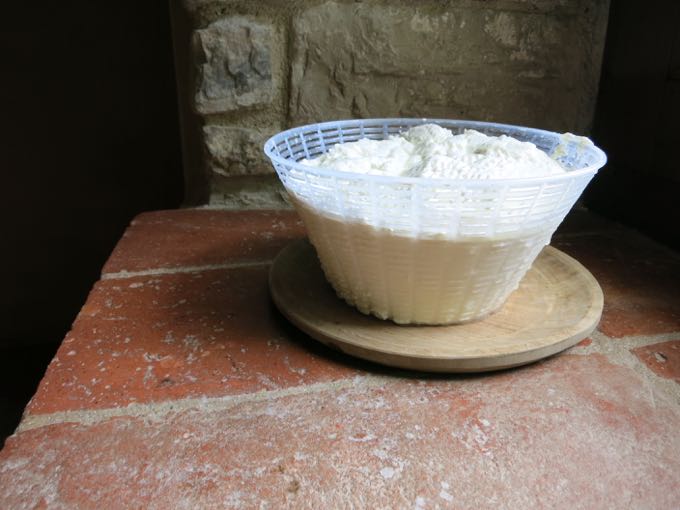
I know a lot of you are justifiably proud about making ricotta in the comfort of your own home. And if you are, chances are you are using this recipe from the New York Times. It’s a great recipe. It makes great cheese, which is rich and creamy and perfect for using in any recipe that calls for ricotta. Also? It’s probably much better than any store bought ricotta you can get in the USA.
But here’s the thing: It’s not really ricotta.
I’m usually not one to naysay colleagues, (and especially ones that are good friends!) but Melissa and I have actually had this conversation. And in fact this conversation is one that has happened many times over between me and countless friends and colleagues. And not just me. Anyone who lives in Italy, or who writes primarily about Italian food knows that ricotta is a very different kind of cheese.
Unlike the recipes for making your own ricotta at home (which call for milk and yogurt) real ricotta is a much poorer affair. It is made with leftovers. The leftovers in this case being the whey that is leftover after you make mozzarella.
Once the mozzarella is made (and you can see this video for how that happens) the leftover whey is then re-cooked. And in fact the meaning of ricotta is re-cook. Get it? Ri-cotta = re-cooked. Once the whey reaches the correct temperature small, delicate, curds start to float to the top. They are then carefully scooped up from the top of the whey and transferred to drain in baskets.
These curds are not especially rich. In fact, they are naturally low in fat since most of the good stuff all went into the original curds that were destined for mozzarella.
Making true ricotta is much more challenging, of course, than simply reheating the whey. It takes skill and it takes the right ingredients, just like any sort of cheese making. A few weeks ago I got to see master ricotta makers in action. After Sophie and I saw the mozzarella being made at Caseificio Montecristo, we stayed and watched them transform the leftover whey into ethereally light ricotta. You can watch too.
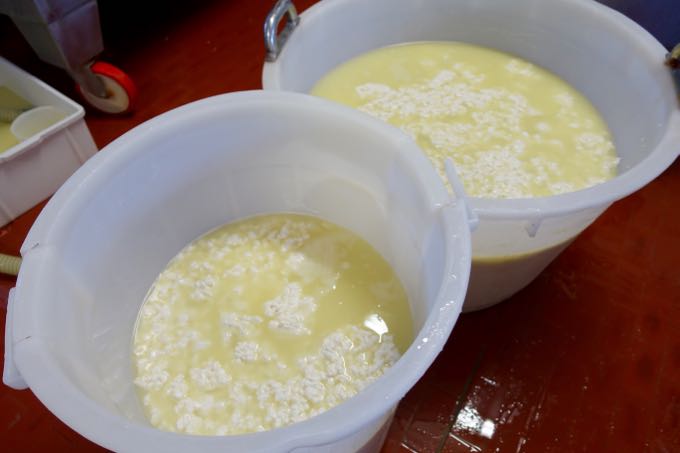
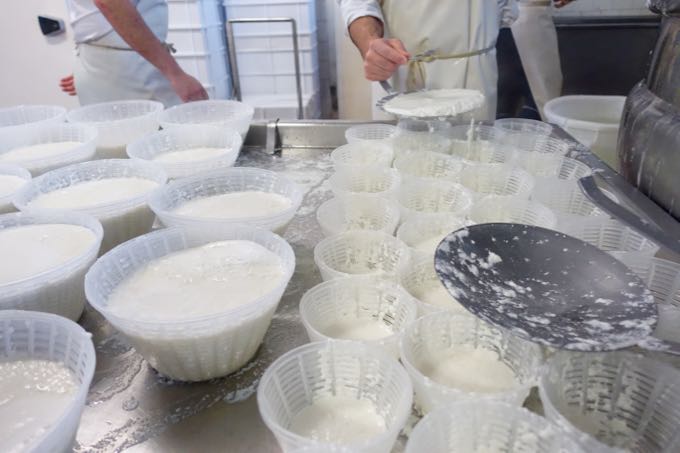
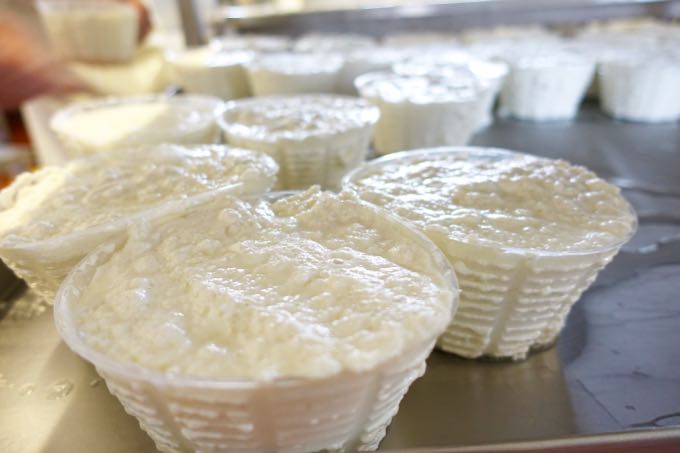
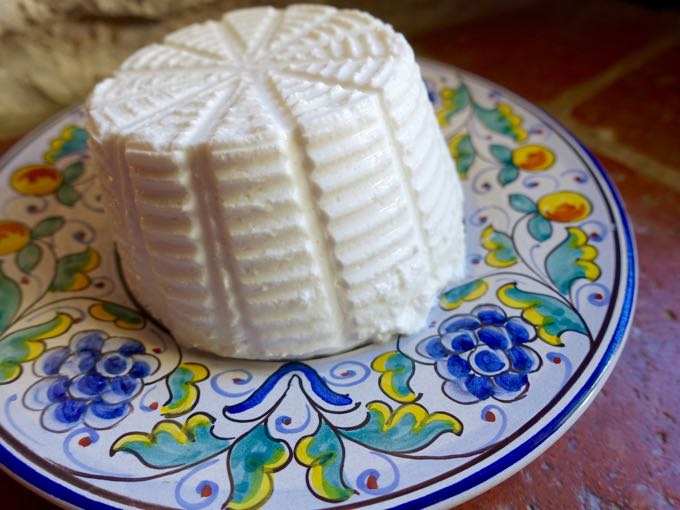
Caseificio Montecristo
Via Campette (Complesso Europalace)
Todi , Pian di Porto
Tel: 075.898.7309
Open Monday-Saturday (closed at lunch time)
Located just off the Todi-Orvieto Exit on the E45. You’ll see the sign for the Europalace Hotel.
For more information on dining in Umbria and Italy download my app, EAT ITALY. EAT ITALY is a free app, and contains guides to Venice, Milan, Rome, Florence, Torino and Umbria (and an ever expanding list of regions and cities) available as in-app purchases for both iPhone and iPad.
Very educating…. Thanks so much.
we loved this video! we went to a cheese-making facility in Tuscany on our last trip to Italy and watched ricotta being made (and tasted it!). wonderful memories!
Although I am not Italian, I always doubted that was the real deal ricotta. My aunt used to make something along these lines and simply called it, “Farmer’s Cheese.” It’s very close to Cottage Cheese. Thanks!
Yes, in fact, it’s farmer’s cheese,which is just as good, but quite different from ricotta.
I make “ricotta” using whole cow’s milk and cream. I recook the whey after I take all of the curds out, which then produces more curds. Yes, it is not true ricotta BUT it is no comparison whatsoever to what is available in the stores here. I earned “golden grand-daughter-in-law status” in 1978 when, living out in the Aleutian islands I made ricotta using powdered milk and super homogenized “shelf milk”. My husband’s grandmother used to send us real provolone wrapped in wax and rope and cans of Cento tomatoes. She was so impressed that I could make ricotta at the ends of the earth!! LOL!!
VERY impressive!!!!
Fascinating, thanks, Elizabeth! Makes me want to go out and buy some ricotta right now. Ri-cotta — re-cooked — I got it now.
I live in Lisbon and they make “requeijao” which translates as ricotta. It’s less creamy than Italian ricotta but I think they must be related. It’s often served in a dessert called “Romeo and Juliet.” Requeijao with marmelada (quince paste). Delicious! Thanks for the great videos.